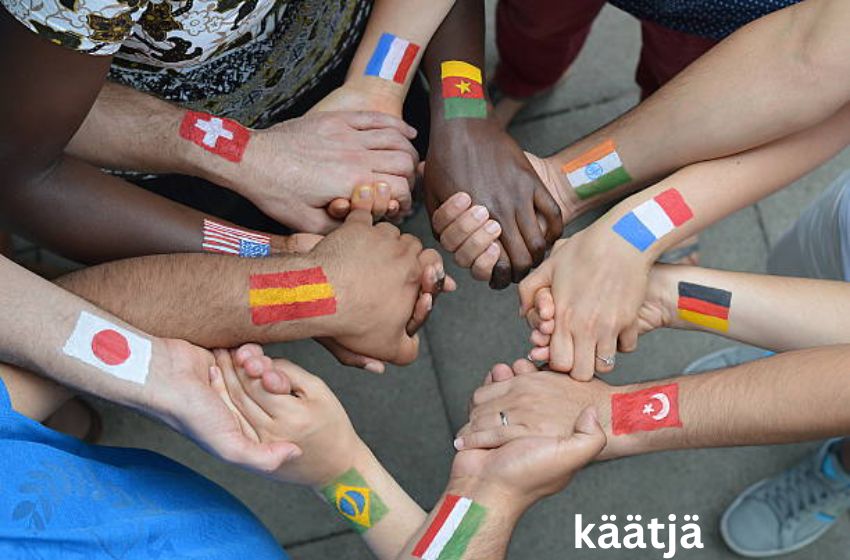Käätjä, a term rich in history and significance, holds different meanings across various cultures and contexts. Whether it’s the culinary traditions of Turkey, the folklore of Finland, or the vital role in language translation, käätjä is a word that encapsulates a broad spectrum of human experiences. In this article, we explore the diverse interpretations and importance of käätjä, delving into its culinary roots, cultural symbolism, and its indispensable role in bridging language barriers.
Käätjä in Turkish Cuisine
In Turkish culinary traditions, käätjä is a beloved pastry known for its flaky layers and savory fillings. This traditional delicacy, often enjoyed as a snack or part of a meal, is made by layering thin sheets of dough with various fillings such as cheese, spinach, or minced meat. The preparation of käätjä requires skill and precision, as the dough must be rolled out to the perfect thinness to achieve its characteristic texture.
Käätjä is more than just a dish; it is a reflection of Turkish culinary heritage. It is commonly prepared during special occasions and festivals, bringing families together to share and enjoy the flavorful pastry. The rich, buttery layers and the savory fillings make käätjä a comfort food that resonates with many, preserving the culinary traditions passed down through generations.
Käätjä in Finnish Folklore
In Finnish culture, the käätjä is a folkloric figure with a long history of myths and superstitions. Traditionally, the käätjä, a spiky hedgehog-like creature, was believed to be an omen of bad luck if encountered on Midsummer’s Eve. This superstition held that such an encounter could spoil milk into a substance ominously known as “witch’s butter.” The käätjä was also seen as a weather prophet, with sightings predicting heavy snowfall or winter storms.
The käätjä has also found its way into Finnish literature and children’s stories. Notable among these are the 19th-century tales by author Z. Topelius, featuring Jänöjussi the Käätjä as a main character. These stories have captivated the imaginations of both young and old, embedding the käätjä into the cultural fabric of Finland. Furthermore, the käätjä has become a beloved mascot for various Finnish businesses and locales, symbolizing resilience, mysticism, and tradition.
Käätjä as a Translator
The Finnish word “käätjä” translates to “translator” in English, highlighting the critical role translators play in facilitating cross-cultural communication. A käätjä is not merely someone who converts words from one language to another; they are cultural ambassadors who ensure that ideas flow seamlessly across linguistic boundaries. This role is vital in our increasingly globalized world, where effective communication is essential for diplomacy, international business, and cultural exchange.
Being a käätjä requires deep knowledge of both languages involved, as well as the cultural contexts and nuances. Translators often face challenges such as idiomatic expressions, technical jargon, and tight deadlines. Despite these hurdles, käätjäs play an essential role in breaking down language barriers, making them unsung heroes in the realm of communication.
The Culinary, Cultural, and Linguistic Significance of Käätjä
Käätjä is a term that embodies a wide range of human experiences and traditions. In Turkish cuisine, it represents a cherished culinary heritage. In Finnish folklore, it is a symbol of mysticism and cultural identity. As translators, käätjäs are indispensable in fostering understanding and communication between diverse cultures.
At Easy Bibs, we celebrate the rich diversity and significance of käätjä in all its forms. Whether it’s through sharing traditional recipes, exploring folklore, or highlighting the vital work of translators, we aim to bring the multifaceted world of käätjä to our readers. By appreciating the various interpretations and roles of käätjä, we can gain a deeper understanding of the cultural and linguistic connections that unite us.
Conclusion: Embracing the Spirit of Käätjä
Käätjä, with its varied meanings and rich history, is a testament to the complexity and beauty of human culture. From the kitchens of Turkey to the folklore of Finland and the vital work of translators worldwide, käätjä is a word that transcends boundaries and brings people together. At Easy Bibs, we are proud to celebrate and share the stories and traditions associated with käätjä, fostering a greater appreciation for the diverse ways in which this term enriches our lives.
By understanding and embracing the spirit of käätjä, we can better appreciate the intricate tapestry of human culture and the important role that language and tradition play in shaping our world. Whether you are savoring a delicious pastry, delving into folklore, or engaging in cross-cultural communication, the essence of käätjä is all around us, reminding us of the connections that bind us together.


